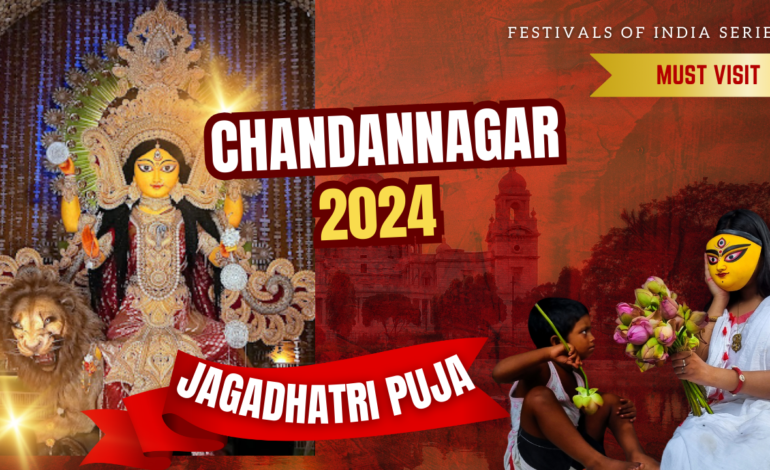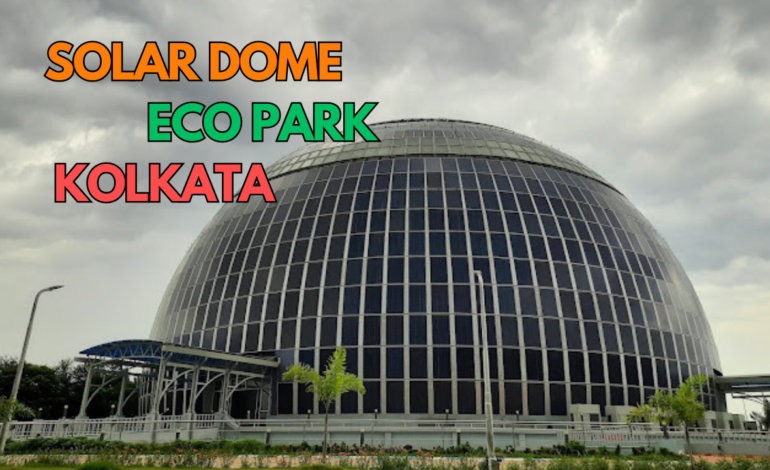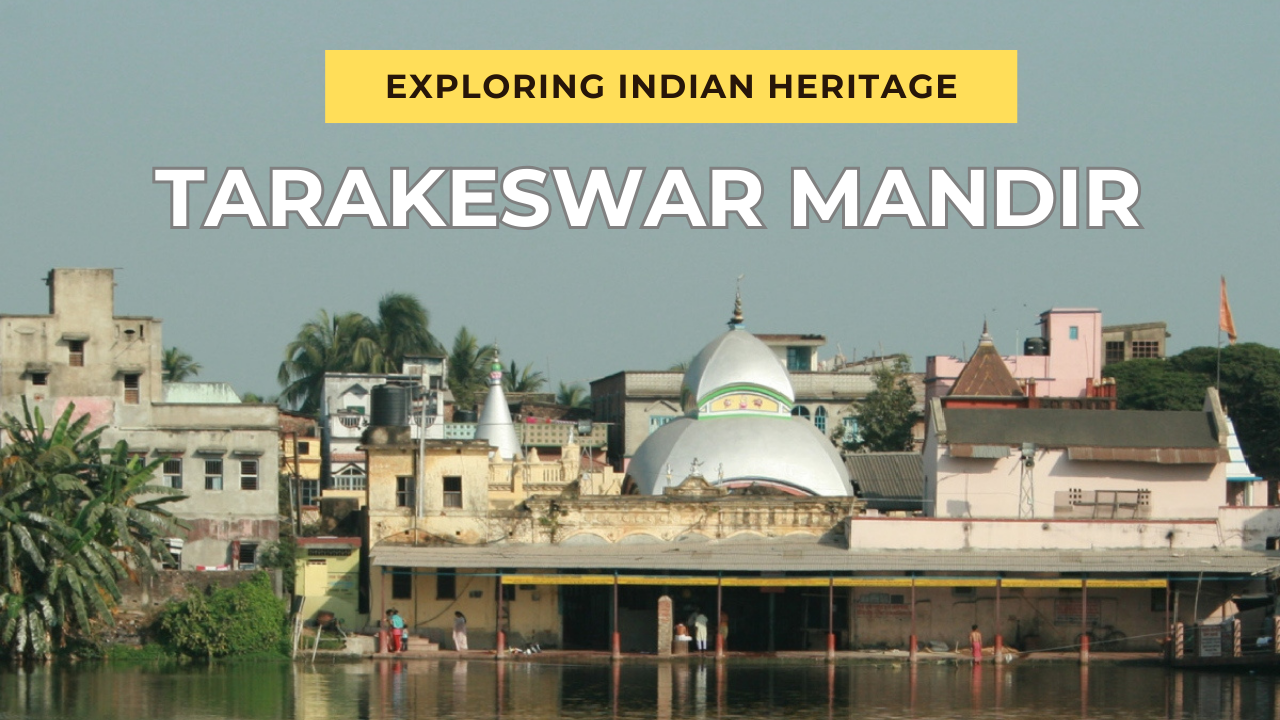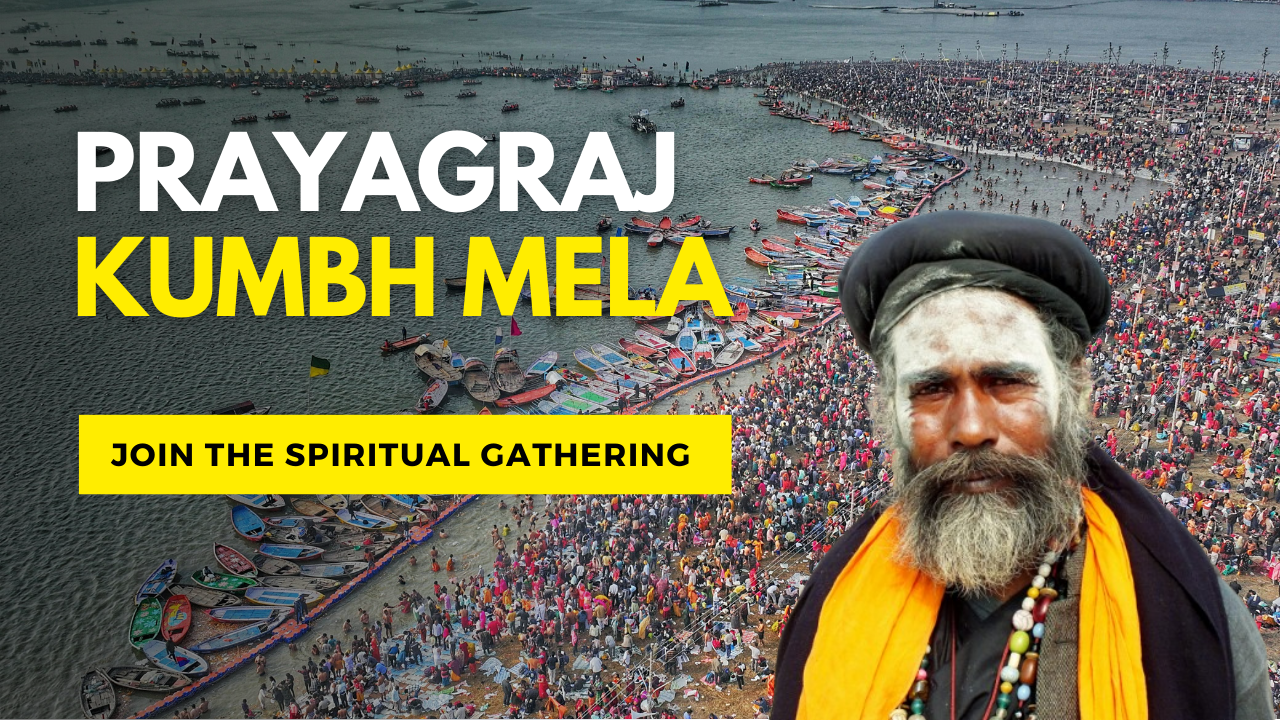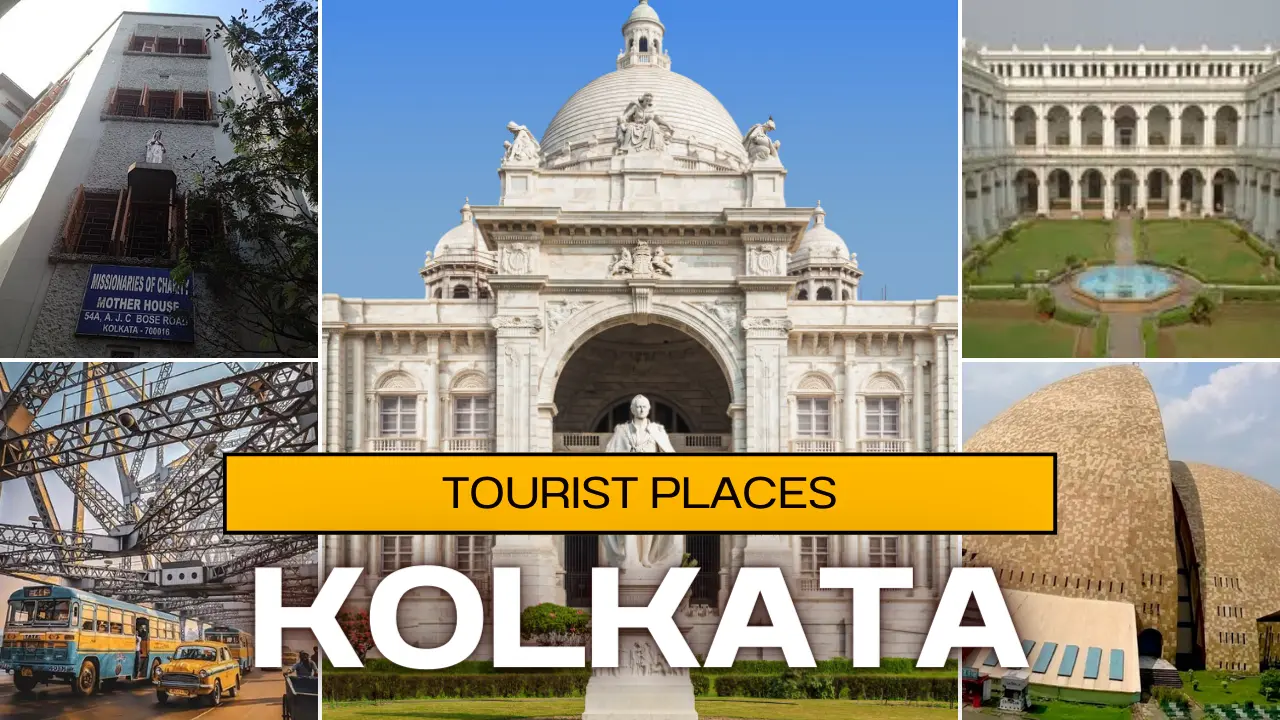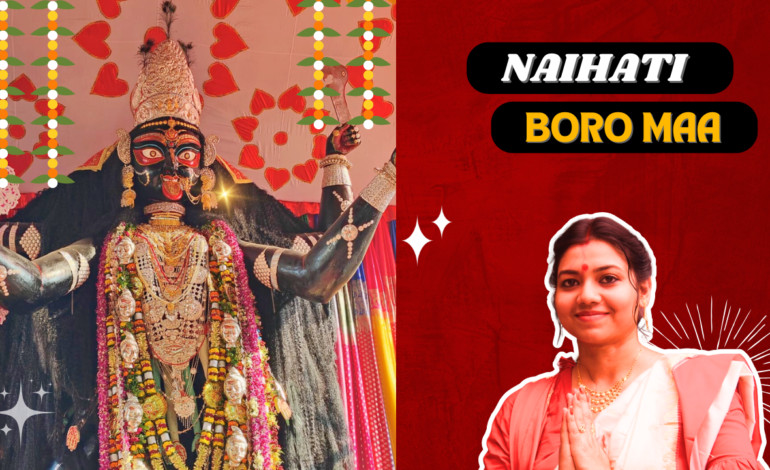
Naihati Boro Maa Kali Puja: A Golden Devotion
Table of Contents
ToggleNaihati Boro Maa :
Barama of Naihati is another revered Goddess Kali figure in Bengal. Each year, thousands of devotees gather to pay their respects, make vows, and witness Ek Amogh. The Dharamshala Bara Kali Thakur, located on Aravind Road in Naihati and affectionately called Barama by locals, has become widely renowned over the years.
Kali Puja, a festival close to the Bengali heart, has begun. According to the Puranas, Goddess Kali appears in various forms. While some worship Shyama, others revere Shamshankali, and some worship Chamundakali. Different forms of the goddess are venerated by various names across regions. Special celebrations take place in parts of Bengal, from Dakshineshwar, Thanthaniya, Lake Kalibari, Tarapeeth, and Kamakhya to Kalighat and other Kali temples during the auspicious Dipanvit Amavasya.
Why is she called Barama?
Many refer to Shanitakur as the “Elder God,” and to Barathakur as the “Lord of Planets.” Similarly, in Naihati, the name Barama carries special significance. This Kali idol, standing about 21 feet tall—or nearly 14 cubits—is unusually large and towering, earning her the name “Barama.”
On Kali Puja, thousands of devotees flock to this historic celebration from early morning. Many perform rituals such as stick-cutting, bathing in the Ganges, and visiting the pandal to fulfill personal vows. Initially, however, this puja was less well-known, with a group of young people worshiping a Rakshakali idol by the roadside. Now, as the puja nears its centenary, there are grand celebrations and special arrangements in place.
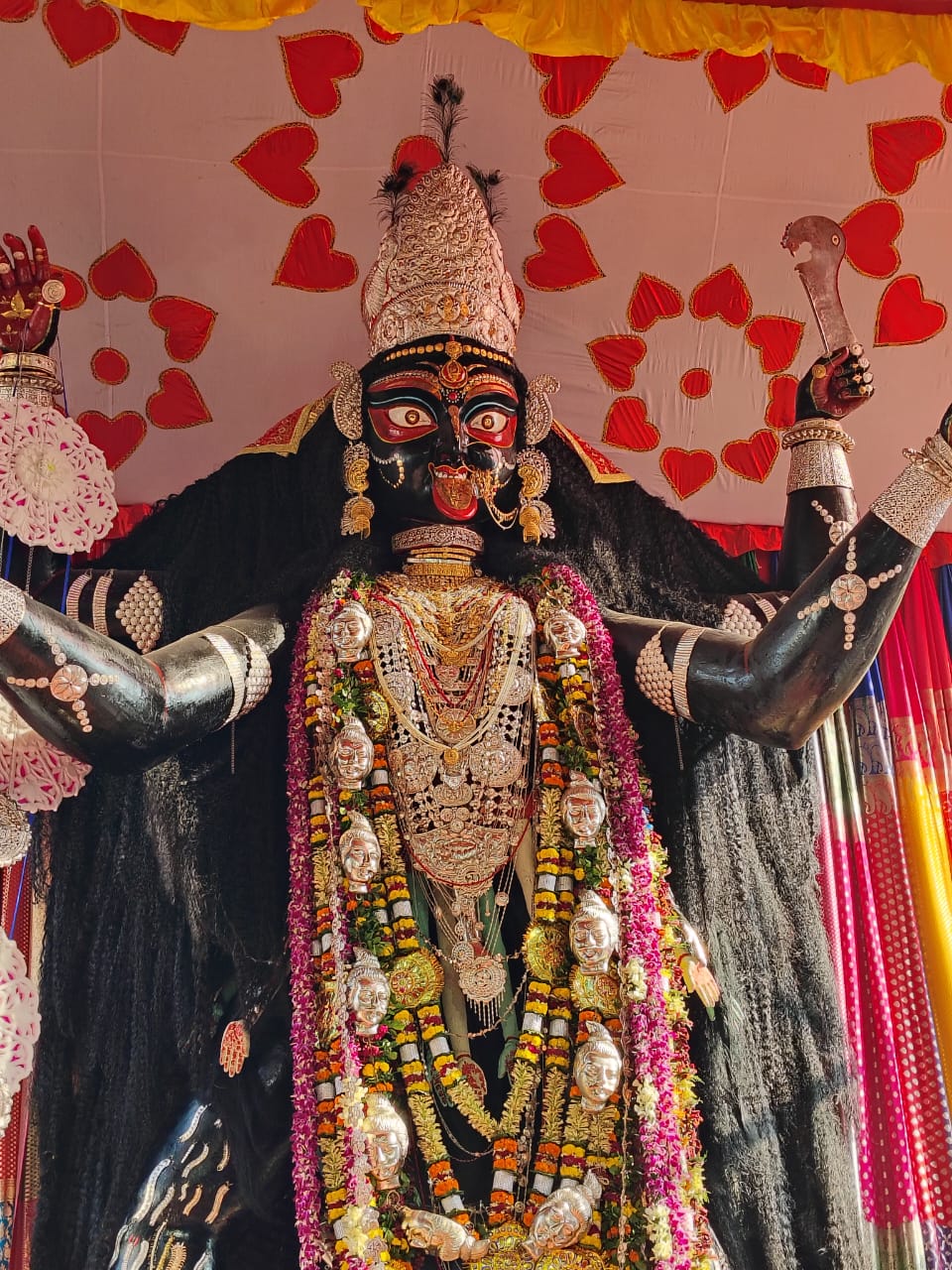
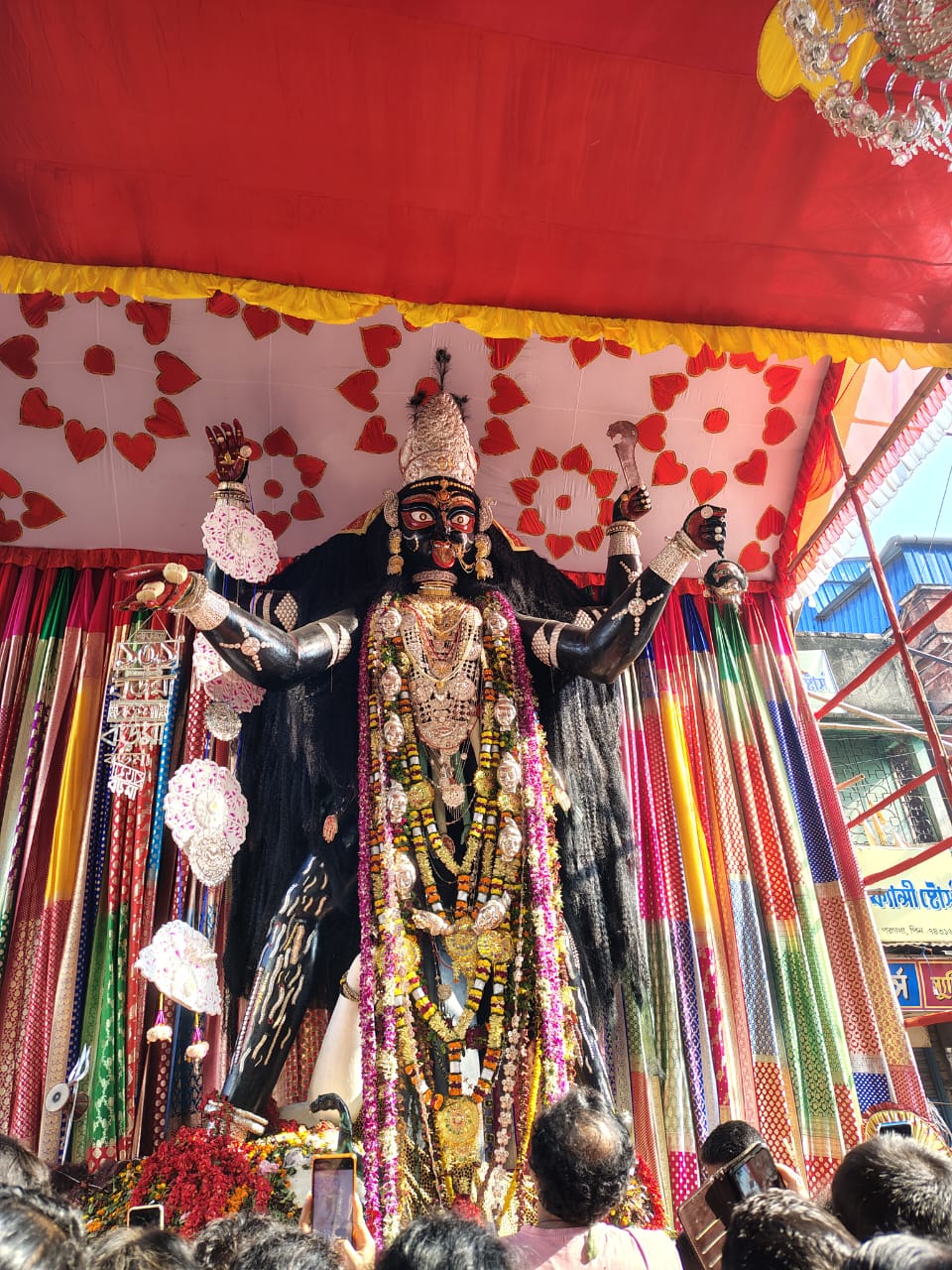
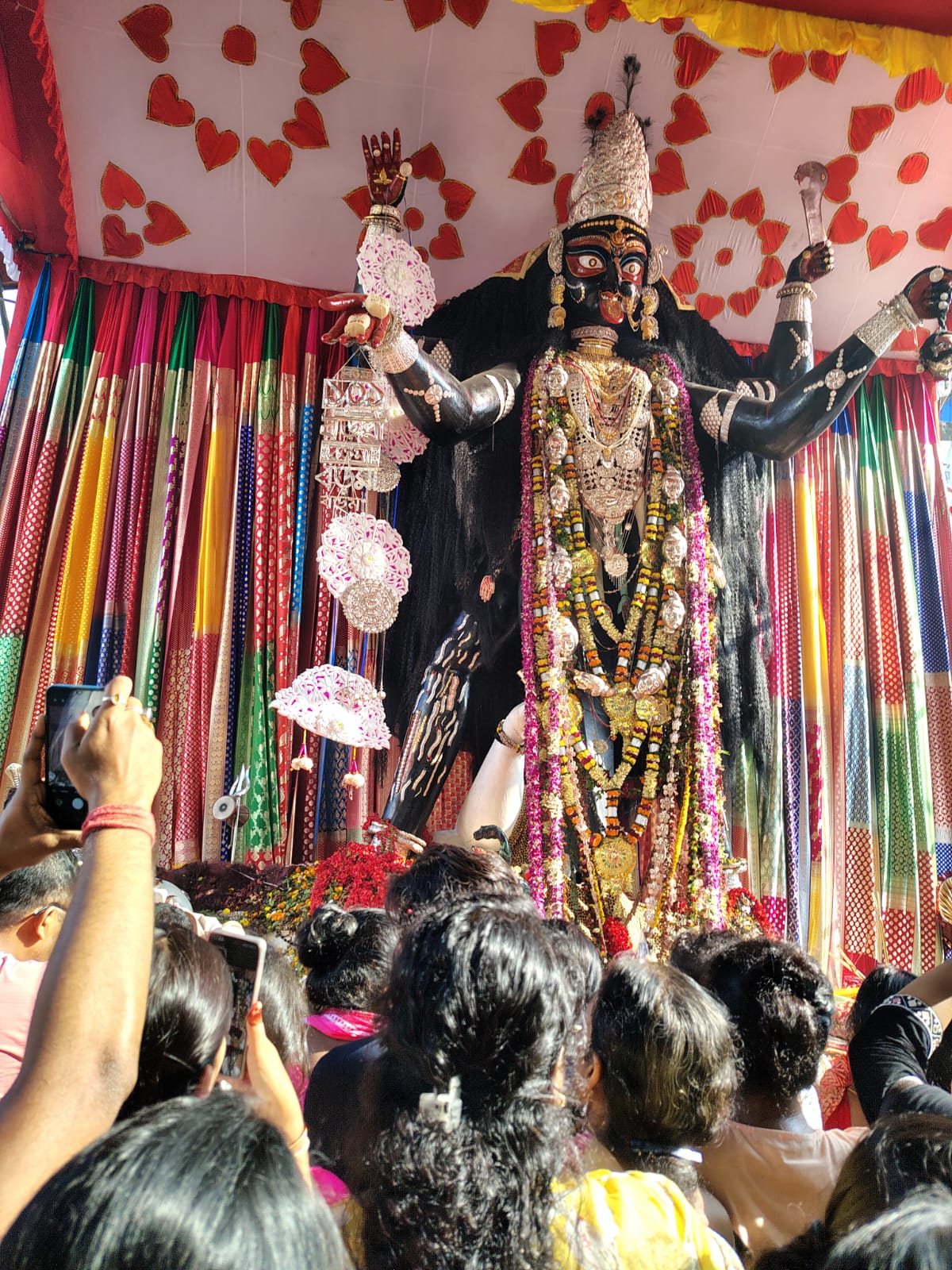
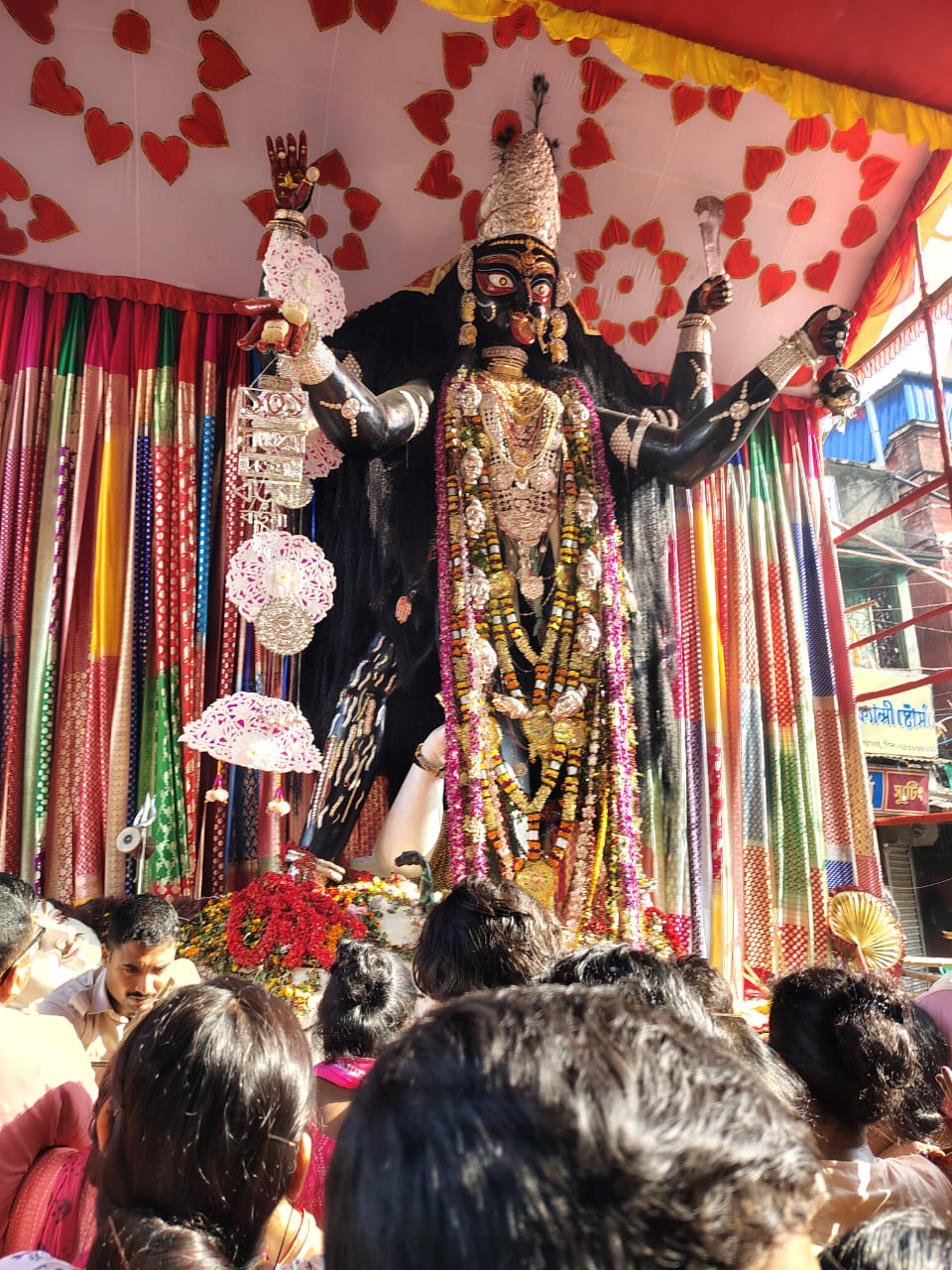
Nearly a century ago, Bhavesh Chakraborty and four friends visited Nabadwip during the Rasa festival. There, Bhavesh was struck by the sight of a large idol and inspired to create a similarly grand Rakshakali idol for Naihati. This puja, introduced by Bhavesh Chakraborty, led to the goddess being called Bhavesh Kali initially. Over time, due to the idol’s impressive size, she became known as Barama.
Naihati now has a permanent temple dedicated to Baramaya. While regular worship occurs there, the traditional Rakshakali puja is still conducted each Kali Puja at a specific location where a clay idol (mrinmayi) is created every year. This begins with a Khotipuja during Kojagri Lakshmi Puja. Despite being a public celebration, no offerings or dakshina are collected from devotees; instead, local worshipers personally fund the goddess’s adornments, food, and all puja materials.
The idol of Naihati’s Barama is strikingly adorned with intricate gold and silver jewelry. The entire idol is wrapped in precious ornaments, as it’s said that Barama wears only gold and silver, never other metals. Many devotees offer jewelry as a vow to have their wishes fulfilled, and today, Barama’s jewelry collection is estimated to be worth around 1.5 million rupees. Every year, during Kali Puja, the goddess is decorated in these gold ornaments.
On the day of Puja, around 100 kilograms of gold jewelry are presented to Barama under strict security. Tradition holds that no puja in Naihati begins until Barama’s worship has commenced. Her worship continues for five days, not just one, culminating in a grand procession across the area on the day of Niranjan, with Barama adorned in floral decorations. Local customs dictate that no other Kali idol in Naihati can be sacrificed until the Great Mother’s sacrifice has taken place. A light carnival is also organized, adding to the festival’s grandeur.
Address: VCQ7+9JP, Shyam Rd, Thakur Para, Naihati, Kolkata, West Bengal 743165

